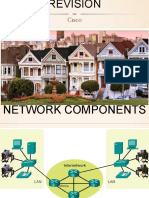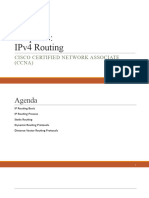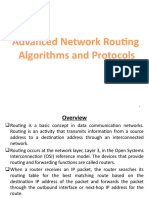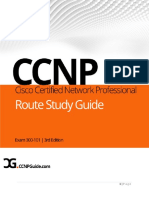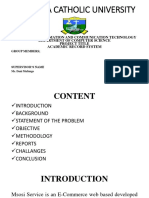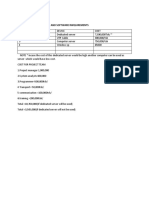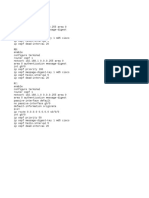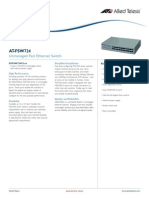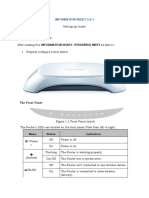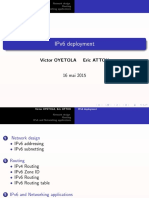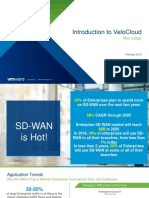0% found this document useful (0 votes)
86 views51 pagesE2 3 DynamicRoutingProtocols
The document discusses dynamic routing protocols. It begins by introducing dynamic routing protocols and their advantages over static routing. It then covers topics like how dynamic routing protocols work, classifying them into IGPs and EGPs, distance vector and link-state protocols, and metrics and administrative distance. The document is intended to provide an overview of dynamic routing protocols and directs readers to further resources for more details.
Uploaded by
john onesmoCopyright
© © All Rights Reserved
We take content rights seriously. If you suspect this is your content, claim it here.
Available Formats
Download as PPT, PDF, TXT or read online on Scribd
0% found this document useful (0 votes)
86 views51 pagesE2 3 DynamicRoutingProtocols
The document discusses dynamic routing protocols. It begins by introducing dynamic routing protocols and their advantages over static routing. It then covers topics like how dynamic routing protocols work, classifying them into IGPs and EGPs, distance vector and link-state protocols, and metrics and administrative distance. The document is intended to provide an overview of dynamic routing protocols and directs readers to further resources for more details.
Uploaded by
john onesmoCopyright
© © All Rights Reserved
We take content rights seriously. If you suspect this is your content, claim it here.
Available Formats
Download as PPT, PDF, TXT or read online on Scribd
/ 51









